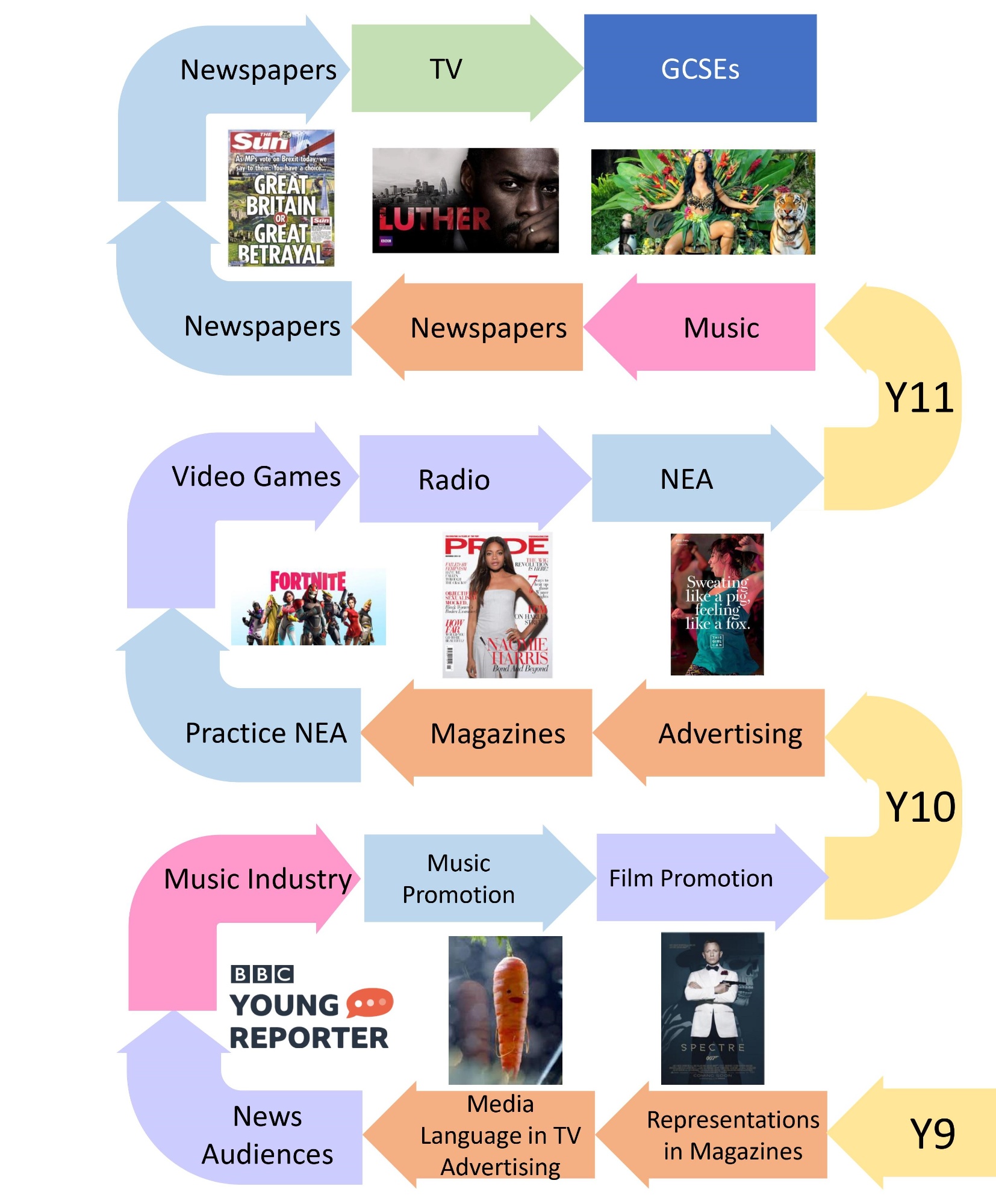Media
Vision
The vision of the media department is that all of our students should have the confidence and ability to look critically at the media which surrounds them. We know that our young people are both active and passive users of a variety of media and we feel it is important that they look beyond the messages they receive and question the motivations and methods behind the communication.
Curriculum Intent
Media Department Curriculum Vision
The vision of the media department is that all of our students should have the confidence and ability to look critically at the media which surrounds them. We know that our young people are both active and passive users of a variety of media and we feel it is important that they look beyond the messages they receive and question the motivations and methods behind the communication.
Media Department Curriculum Intent
Our curriculum enables students to explore a variety of media forms – both new and traditional – from a diverse range of sources and from different historical periods. In addition to exploring and evaluating media products, we provide our students with the opportunity to create media products of their own, encouraging them to apply creativity, develop technical skills and to deliver their own messages. We regularly review prior learning and ensure that students make links across topics so that knowledge and understanding are consolidated. We continually pose challenging questions to model inquisitiveness across all areas of the media.
KS4 Curriculum
Students begin to study media from Y9 and in that year we teach the basic principles of the theoretical framework (representations, audience, industries and media language). We teach this through a series of units involving some of the different media forms students will study throughout their GCSE and, potentially, A Level. These include television advertising, magazines and social media.
We build on the basic principles in the GCSE curriculum with more structured study around the set products, specified by the exam board, and introduce a number of set theories (which students are required to know) and some additional theories which we have selected to enhance our students’ understanding and elevate their responses to achieve the higher bands in exam answers.
In Y10, students carry out a piece of coursework in response to a choice of four briefs set by the exam board. This involves detailed, individual research of a media form (for example, magazines or music videos) followed by the planning, production and post-productions stages. Before starting work on the coursework, we have carried out three or four practice tasks so that students have experienced both print and audio-visual production and can make an informed choice about the brief which they are most likely to enjoy and to excel in.
KS5 Curriculum
In KS5 we teach students who have previously studied media for three years alongside those who are taking the subject for the first time. This requires careful work on the part of the class teacher to balance teaching content which some students have some familiarity with alongside others who must have this critical knowledge which is all new to them.
Again, the curriculum is structured around a series of set products and 19 set theorists. As at KS4, we teach several additional theorists, knowing that this gives our students the tools with which to evaluate theories in their responses and be, therefore, more likely to write higher band responses. We continually recommend wider reading, watching and listening around the subject to give our students as broad an experience of the media as possible; this supports higher quality exam responses and provides students who wish to study media-related courses at university the examples they need to enhance their personal statements and interview performance.
The KS5 coursework is more than twice as much work as that of KS4 and students must now work in two different media forms (for instance, a television extract and the posters and DVD packaging to accompany it). Students learn to work independently, have a critical eye and apply advanced technical skills using industry-standard software.
Above all, we continually remind ourselves and our students of the importance of taking a cynical approach to the media, encouraging them to doubt what is presented and to evaluate the motivation and methods of the media producers.

